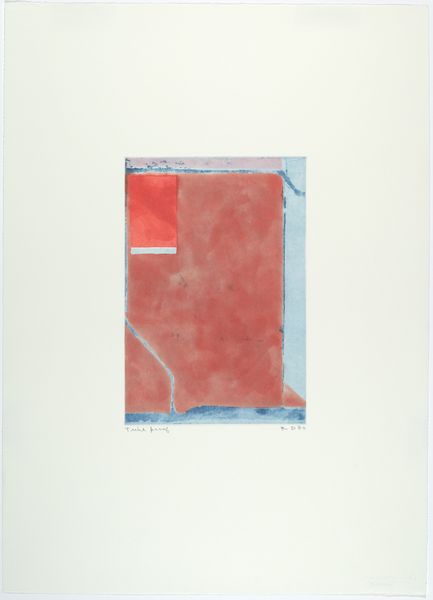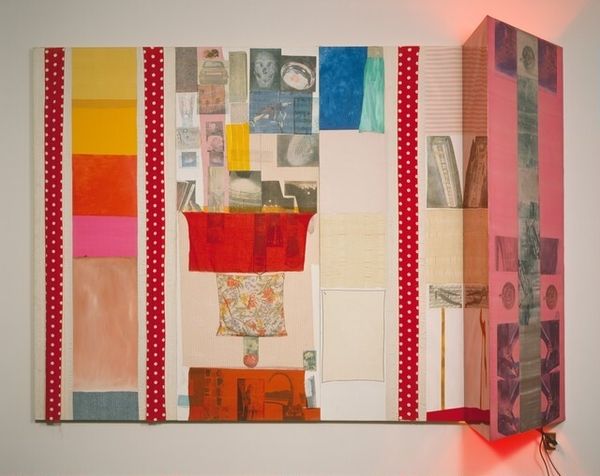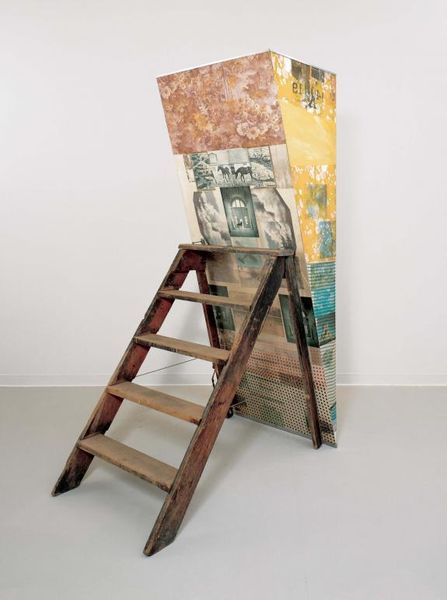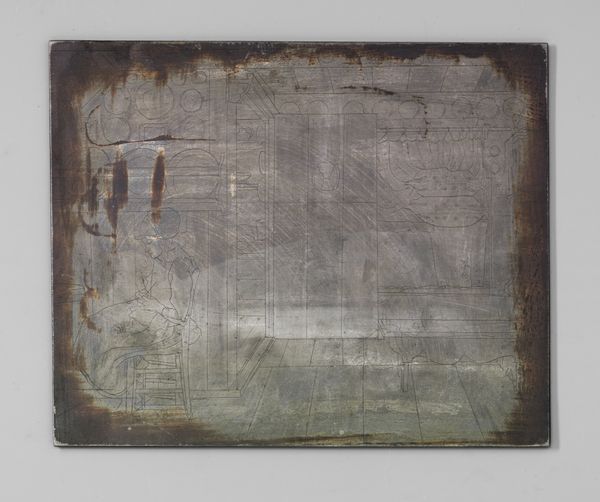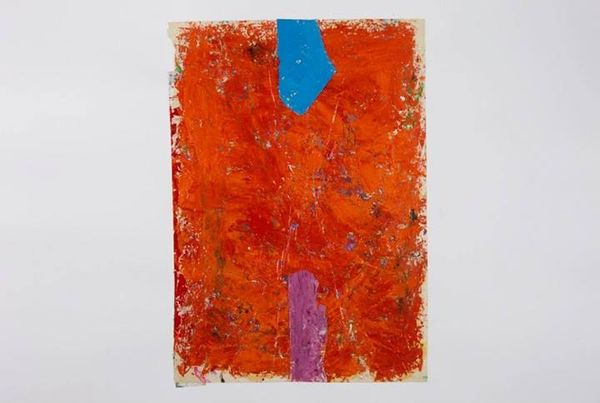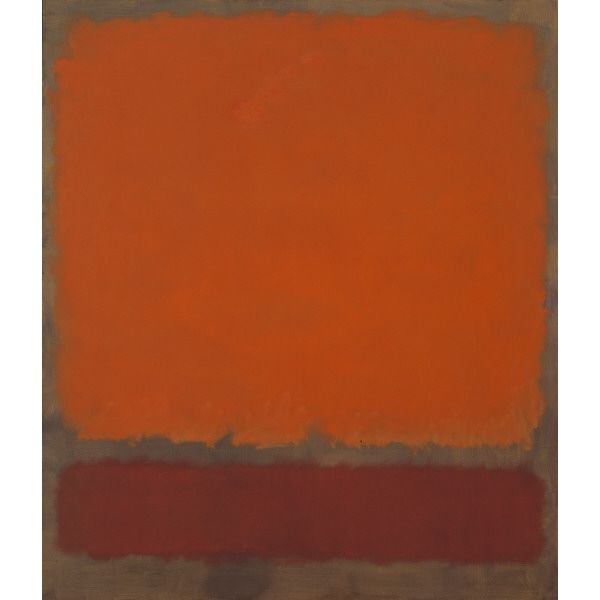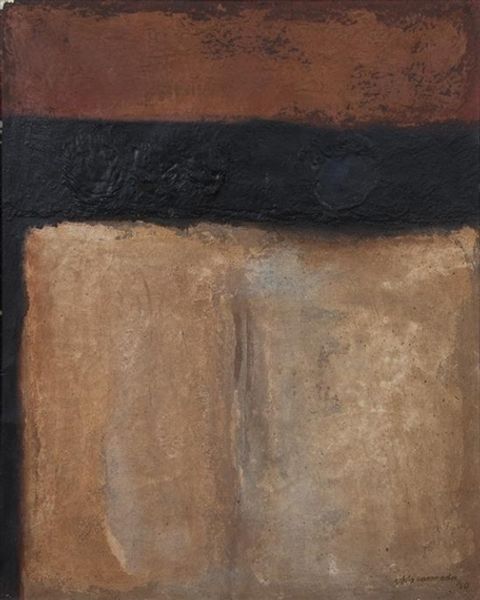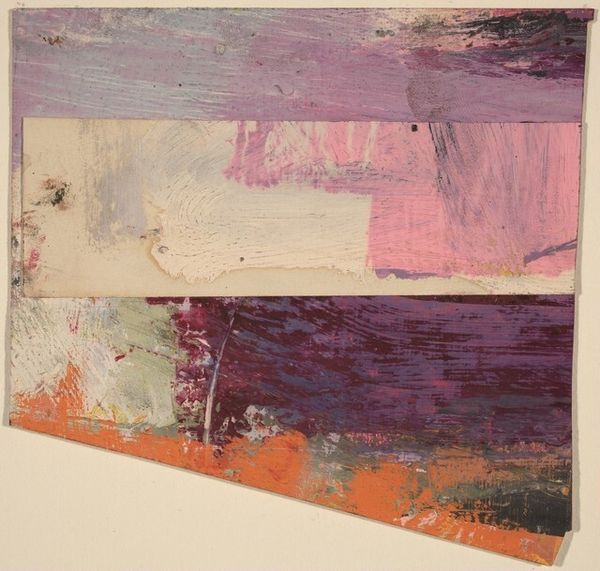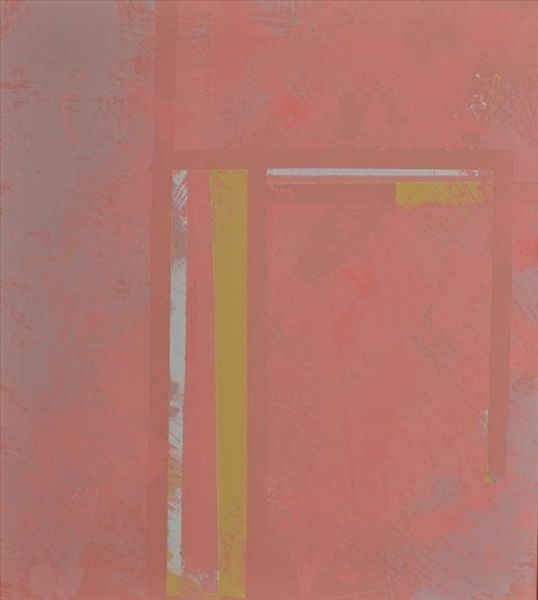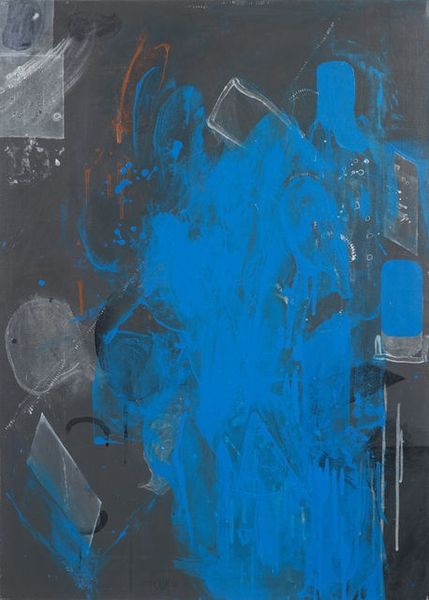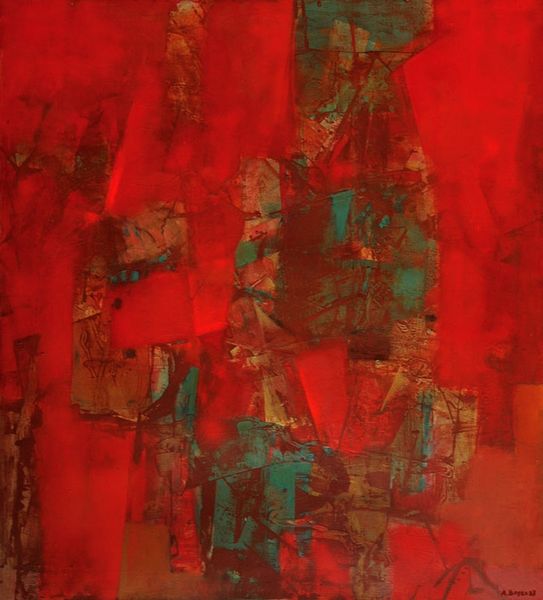
#
neo-dada
#
black-mountain-college
Copyright: © 2019 Robert Rauschenberg Foundation. All right reserved.
Editor: Here we have Robert Rauschenberg's "Mango Ice Cave (Scale)" from 1977. It looks like a mixed-media assemblage, featuring collage, found objects, and painting. There's a large red-orange canvas surrounded by smaller images and a ladder propped up against it, seemingly part of the artwork. What strikes me most is the contrast between the vibrant canvas and the seemingly discarded ladder. How do you interpret this work? Curator: Rauschenberg, particularly with his Combines, challenged the established art world by integrating everyday objects into his works, disrupting traditional notions of artistic value. I wonder, how can we interpret the ladder? Does it act as a symbol for aspiration? What about access? Perhaps even a critical commentary on the hierarchies of art itself. The ladder almost begs the viewer to ask where it might lead. Editor: So the ladder isn't just a discarded object; it actively engages with themes of social mobility and perhaps even critiques of artistic elitism. I noticed the collaged images surrounding the canvas - do these have any particular significance in relation to this? Curator: Absolutely. The collaged images likely speak to the media saturation of contemporary life and act as a socio-political record of their time, but juxtaposing that against the textured canvas makes one think about private versus public, history versus immediacy. It may even lead us to contemplate on how our histories become obscured. Are we seeing how images act as barriers? Editor: So the seemingly random selection is carefully curated to stimulate thoughts about social issues. Now, thinking about appropriation, could Rauschenberg be highlighting who has access to resources, like art, and who doesn't? Curator: Precisely. Through appropriation and juxtaposition, Rauschenberg creates a space for dialogue on identity, power structures, and the politics of representation. Editor: This artwork certainly seems far more complex and politically charged than I initially perceived. Curator: Agreed. It makes one consider the role of art as both a reflection and a critique of society.
Comments
No comments
Be the first to comment and join the conversation on the ultimate creative platform.
